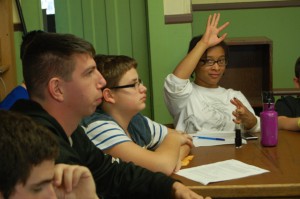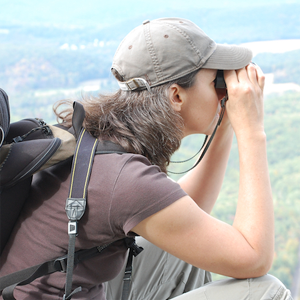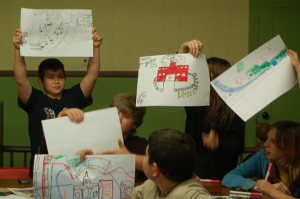
By Krista Gromalski
krista@heronseye.com
Engagement journalism—formerly referred to as civic journalism—mobilizes people to address local issues “in a powerful, focused way that shows how ordinary individuals can make a difference” (Denton & Thorson, 1995, How the News Media Might Work section, para. 5). According to leading theorist and New York University Professor Jay Rosen, civic journalism emerged most prominently in the early 1990s in newspaper initiatives focused on “regrounding the coverage of politics in the imperatives of public discussion and debate” (Denton & Thorson, 1995, A New Philosophy of the Press section, para. 2). Today, he says, it has “been overtaken by developments since the rise of the web, [and] has become common sense under the banner of ‘engagement'” (Rosen, personal communication, April 6, 2013).

Young journalists at Manor Ink participated in a field study, which tested engagement journalism techniques within a small rural community.
In the coming months, I’ll launch my youth-led media project Coal Cracker by working with young people in PA’s Anthracite Region on engagement journalism techniques as a means to discover new approaches to community challenges, make sense of their collective experiences, and express common values. This method is supported by University of North Carolina Public Policy Analysis major Christopher K. Sopher’s (2010) call for improvement and expansion of the field of civic journalism as a way to involve young people in community affairs.
Functionally, engagement journalism “…tries more explicitly to activate and elevate public deliberation on community issues. It is keener on explaining the choices facing the public and, especially, on identifying what values are linked to alternative policies… It also takes more reportorial initiatives aimed at helping the community find ways to solve major public problems” (Lambeth et al., 1998, p. 18).
Engagement journalism is, therefore, complementary to Coal Cracker’s focus on creating sustainable communities by recognizing culture as central to civic dialogue. It is also, according to Professor Rosen, a continually evolving field rather than “a settled doctrine or a strict code of conduct” (Denton & Thorson, 1995, A New Philosophy of the Press section, para. 2). A status that enhances Coal Cracker’s potential to carve new ground.
One strategy I propose for innovating the field of engagement journalism is to combine its practice with a collection of complementary pedagogical tools including arts based research, which integrates the roles of academic and artist to inform and deepen the discovery process; and youth participatory action research (YPAR), the practice of conducting “research ‘with’ as opposed to ‘on’ youth, around issues that they find most important in their lives” (Cammarota & Fine, 2008, p. vii). Working in concert, these tools have the potential to—guide young Coal Cracker participants toward a tactile understanding of the multiple roles of journalist, researcher and artist. “When passion and rigor boldly intersect out in the open,” says leading qualitative and arts-based researcher Dr. Patricia Leavy, “a holistic, integrated perspective is followed” (Leavy, 2009, p. 2).
Combining youth-led change-driving journalistic inquiry and arts based research practices, then, at a local level within a small rural community such as the Coal Region has the potential to produce leading edge contributions to the field of engagement journalism while catalyzing community transformation—a possibility supported by Rosen’s perspective as well as that of Leavy (2009), who further describes the arts-based process as one of carving new research tools as opposed to discovering them. This approach also addresses author and cultural analyst John Hawkes (2001) claim that “active community participation in arts practice is an essential component of a healthy and sustainable society.”
Sources:
Cammarota, J., & Fine, M. (2008). Revolutionizing education: Youth participatory action research in motion. New York, NY: Routledge.
Denton, F., & Thorson, E. (1995). Civic journalism: does it work?. Pew Center for Civic Journalism. Retrieved from http://www.pewcenter.org/doingcj/research/r_doesit.html
Lambeth, E. B., Meyer, P.E., & Thorson, E. (1998). Assessing public journalism. Columbia, MO: University of Missouri Press.
Leavy, P. (2009). Method meets art: Arts-based research practice. New York: Guilford Press.
Sopher, C. K. (2010). Younger thinking: an evaluation of young america and the future of news media and civic life. Retrieved from http://youngerthinking.com
Twitter exchange with J. Rosen (personal communication, April 6, 2013).





